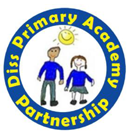Phonics (Little Wandle Revised Letters and Sounds)
Intent
We believe that all our children can become fluent readers and writers. This is why we teach reading through Little Wandle Letters and Sounds Revised, which is a systematic and synthetic phonics programme. We start teaching phonics in Nursery/Reception and follow the Little Wandle Letters and Sounds Revised progression, which ensures children build on their growing knowledge of the alphabetic code, mastering phonics to read and spell as they move through school.
As a result, all our children are able to tackle any unfamiliar words as they read. We also model the application of the alphabetic code through phonics in shared reading and writing, both inside and outside of the phonics lesson and across the curriculum. We have a strong focus on language development for our children because we know that speaking and listening are crucial skills for reading and writing in all subjects.
Spirituality
Children develop creativity by exploring how words are constructed together using sounds. Phonic knowledge is the key to unlocking awe and wonder through reading.
Phonics overview for Reception and Year 1
Presentation to Parents
Here are the slides used in our presentation to parents about Phonics and Early Reading in Reception and Year 1. They give information about how we teach Phonics and Reading in school, and ways to help at home.
Presentation for Reception Parents
Presentation for Year 1 Parents
Here is the presentation used in our Phonics Screening Check meeting (18.5.23). It gives information about when, why and how the test will happen, and ways to help at home.
How to say letter sounds
//www.youtube.com/embed/-ZtjFIvA_fs#t=0.5
//www.youtube.com/embed/qDu3JAjf-U0#t=0.5
//www.youtube.com/embed/DvOuc7cWXxc#t=0.5
For Phase 5, please look at the Little Wandle Parents page, following the link. Phonics (Little Wandle Revised Letters and Sounds)
How we teach tricky words
//www.youtube.com/embed/3C1KTDag0ZA#t=0.5
How we teach blending
//www.youtube.com/embed/IL5YUCPyC5I#t=0.5
Reading at home
This video explains how you can support your child with reading at home while they are learning phonics. If your child is in Year 2 (or above) and has finished the phonics programme, please visit the reading page to see how you can support them with reading at home.
/i/video/WIN_20211207_10_04_50_Pro.mp4
Phase 2, 3 and 5 sounds
The information below can be used to support your child with saying and writing their sounds.
Phase 2 - 5 Grow the Code Sound Map
For further support and information about Little Wandle Letters and Sounds, please visit the website by clicking the link below.
Vocabulary
|
Phoneme |
The smallest unit of sound in a word - often referred to as a sound. |
|
grapheme |
A letter (or sequence of letters) that represent(s) a phoneme. |
|
Grapheme-phoneme correspondence (GPC) |
The match between a phoneme and grapheme. |
|
Oral blending |
Say phonemes in the word and blend in your head or out loud. |
|
blending |
Say individual phonemes, put together to make a word. |
|
chunking |
Breaking words or parts of words into phonemes. |
|
Multisyllabic word |
A word with more than one syllable. |
|
digraph |
A phoneme that is represented by two letters. e.g. ar, ea, er, oi, ch, th |
|
trigraph |
A phoneme that is represented by three letters. e.g. air, igh, ear |
|
Split vowel digraph |
A digraph that is separated by one or more consonants within a word. eg cake, bite, phone, these, cube. |
|
Adjacent consonants |
Consonants blended together when reading a word. |
|
Alternative graphemes |
Different representations of a phoneme in a word e.g. high, pie. |
 Diss Infant
Diss Infant